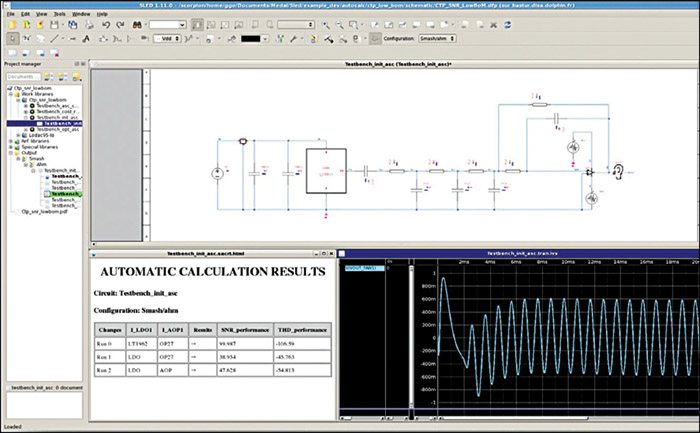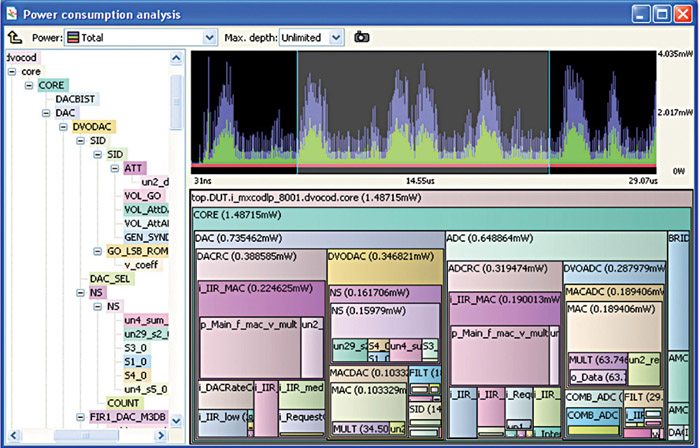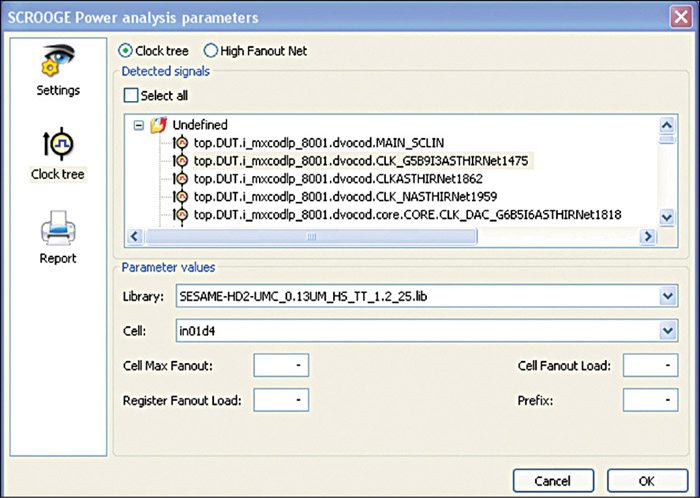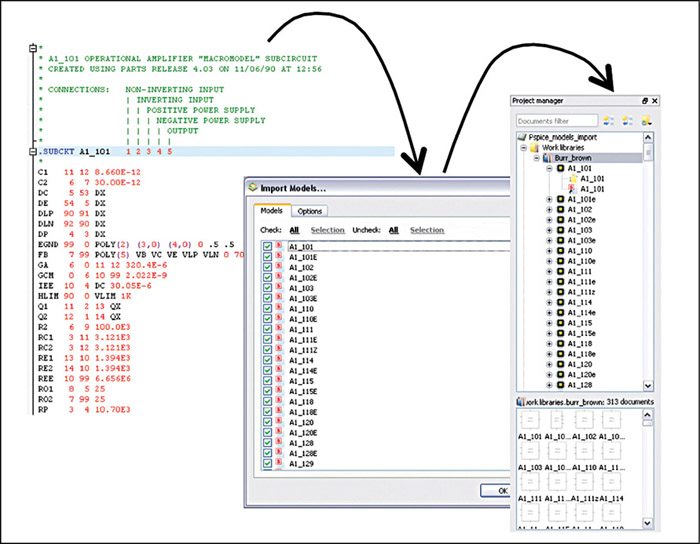In this article we take a closer look at the three EDA solutions offered by Dolphin Integration: hierarchical schematic editor, SLED; mixed-signal simulator, SMASH; and its extension for power consumption analysis, SCROOGE
Ashwin Gopinath
Dolphin Integration is a company based in Grenoble, France. The company produces electronic design automation (EDA) software, MEMS converters, regulators, silicon intellectual property (IP) of audio codecs, memories, and also provides custom fabless services.
Let’s take a closer look at three of its EDA tools, their functions and the advantages they offer to design engineers.

SLED schematic editor
SLED is a hierarchical schematic entry solution by Dolphin Integration that allows designers to perform graphic entry and configuration of their designs in much less time. It efficiently blends the feasibility of linking components along with interactively and graphically configuring design contexts for hierarchical netlisting. It also improves designers’ productivity by enabling the creation of true mixed-signal circuits, multi-level and multi-domain systems.

Key benefits. SLED provides a user-friendly interface. It allows file exchange with other schematic entry tools along with other tools in the design chain. It also supports the most common modelling languages such as SPICE, Verilog, Verilog-A, VHDL and VHDL-AMS, and enables modelling of micro electromechanical systems (MEMS) and multi-domain systems, thanks to the features supporting graphic VHDL link editing. SLED delivers a dynamic link with mixed-signal simulator SMASH (discussed later) for schematic-driven design.

SLED allows creation of multiple levels of descriptions for system or single-block validation, while also combining SPICE and HDL representations to ease the architectural design of any system-on-chip (SoC). A system can be iteratively validated by using a SPICE representation of a single block, while all other blocks in the system are represented in HDL for a fully-functional mixed-signal simulation. It is fundamental for state-of-the-art hierarchical designs of multi-domain components. For design of analogue circuits, the generic library of SPICE components combined with multi-flavour SPICE netlisting improves designers’ productivity by enabling creation of true mixed-signal circuits.
Ease of use. SLED has a direct syntax colourised behavioural code display to facilitate reading of HDL and HDL-AMS models. It comes with easy push/pop navigation through a list of hierarchical schematics. It has click-‘n’-drop symbols of any blocks from any generic or ad-hoc library and drags them while preserving wire connections.
Schematic consistency checks. SLED saves time due to early error detection during design with coherency checks, i.e., symbol vs model I/O, and online electrical rule checks, i.e., shorted output pins.

Interoperability and compatibility. The design data—including design or reference library configuration files, symbols, schematics—is stored in an ASCII format, enabling a script-based approach for automatic symbol generation, library conversion and design library setup. It comes with a built-in handling of design context configurations for multi-flavour SPICE netlisting (SMASH, Hspice, SDL, LVS).
EDIF import/export. The option to import/export to and from EDIF provides the means to exchange full schematics including graphics with other design entry solutions, as well as to transfer designs to the next step in your design chain, such as schematic-driven layout.
Design of multi-domain systems. SLED offers the capability to create highly flexible and complex models through graphic composition. It covers the modelling of any domain like analogue electronics, digital electronics, mechanics, magnetic and thermal effects. SLED is ideal for multi-domain systems where designers are guided with intelligent-type checking of terminals during wiring of symbols. Initialising homogeneous simulation of such heterogenic systems in SMASH avoids simulator couplings with its disadvantages in configuration, setup and convergence problems.
SCROOGE power consumption estimator
SCROOGE is a power consumption analyser for simulating mixed-signal power consumption hierarchically. Where the common solutions just enable statistical or average power consumption analysis, the USP of SCROOGE is in providing a hierarchical evaluation of power consumption.
SCROOGE is the ideal solution for companies wondering on how to take a step towards efficient power estimations. Its capability to provide results for a complete mixed-signal design enables precise power optimisations and sizing of the components.
Key benefits. It is functionally very easy to integrate SCROOGE in your flow as it is easy to reduce power consumption all along the design chain through accurate transient analysis of the peaks on your SoC. You can easily optimise the sequencing of an SoC by identifying the most consuming parts, without any need for any other data. SCROOGE lets you avoid design iterations with your P&R provider with a clock tree emulation available after synthesis.








Pretty! This wwas an extremely wonderful article. Thanks for providing these details.
This is a topic which is near tto my heart…
Best wishes! Exactly where arre your contact details though?
You can contact us at this link.
I eally love your website.. Very nice colors & theme.
Did you develop this web site yourself? Please reply back as I’m
looking to create my own site and want to find out where you got this frrom orr what the theme is named.
Many thanks!